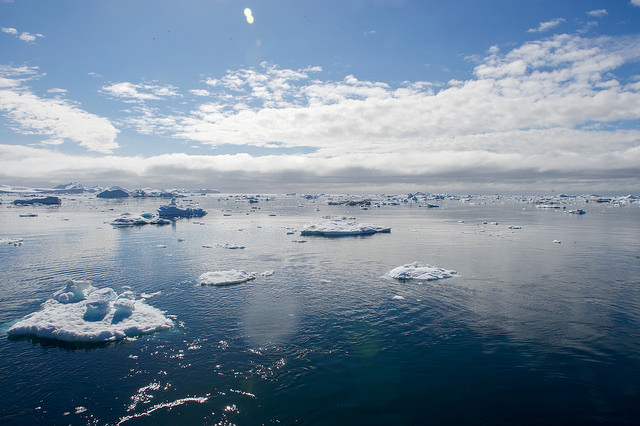 Photo Courtesy of the U.S. Department of State
Photo Courtesy of the U.S. Department of State
Adapting to Climate Change
In the midst of the Indian Ocean, lies the tropical Maldives, a country with a population of only approximately 400,000 people. Sitting just 8 feet above sea level, the Maldives is one of the many countries vulnerable to the effects of climate. Although the international community has taken initiative on addressing climate change, research has found that even if carbon dioxide emissions were to come to a halt, the deleterious effects of greenhouse gasses would have long-term implications for global warming and the rise in sea levels. In a paper published in January 2017, the National Academy of Sciences concluded that greenhouse gases such as methane, chlorofluorocarbons, or hydrofluorocarbons, that linger in the atmosphere for just a year to a few decades, can cause sea levels to rise for hundreds of years even after the pollutants have left the atmosphere. According to their estimates, as much as 50 percent of greenhouse gasses would remain in the atmosphere for over 750 years. Although the global community must continue their vigilance on mitigating environmental pollutants, this study demonstrates the critical need to address climate security for those in disaster-prone communities who are already being affected.
In September 2016, the American Security Project released a report, “Resilience in the Face of Rising Sea Levels”, that examines how regional adaption initiatives in the United States can address the challenges facing Americans communities. The San Francisco Bay Area Clean Water, Pollution Prevention and Habitat Restoration Measure, known as Measure 22 brings together nine Bay Area counties to focus on habitat and marshland restoration, which act as a barrier to rising sea-levels. Further south of San Francisco, San Diego county has formed the Climate Collaborative, which has promoted cooperation between communities and between the local and federal government to achieve its goal of preparing for climate change impacts and reducing greenhouse gas emissions. These local adaptation programs exemplify how communities can implement solutions to absorb the impacts that climate change inflicts upon their regions.
Just across the Pacific, French Polynesia is redeveloping infrastructure to be more resilient through new innovative approaches. The government of French Polynesia has approved a plan proposed by a California non-profit, the Seasteading Institute, to build a city of floating islands in the South Pacific. The nonprofit has raised $2.5 million from interested donors and claims they can start construction as early as next year. Seasteading executive director, Randolph Hencken, stated that the nonprofit’s vision is to create a city of floating islands for those most threatened by rising sea levels. Hencken added that the floating cities would be nautical versions of special economic zones that would showcase energy innovations in sustainable aquaculture, solar power, and ocean-based wind farms.
Aside from regional, infrastructure adaptation methods, new agricultural techniques can be implemented to relieve the stress of climate change on food production. In countries like Bangladesh and Vietnam, the rise in sea levels has led to increased salinity in the agricultural terrain and salt-water intrusion. Rice production is projected to decrease by over 15% in affected areas. Bangladesh and Vietnam are also likely to face significant shortages in drinking water and irrigation. Measures that may adequately address these issues include incorporating new varieties of rice, crop rotation systems, and soil salinity management like changing the date of sowing. Climate-smart agriculture and irrigation are integral to maintaining the production levels of food and access to clean water.
Warming temperatures, melting ice-glaciers, and disappearing land characterize the environmental effects greenhouse gasses have imposed on the global. While renewable energy investment can decrease the current amount of greenhouse gas emissions, there also needs to be a focus on polices geared towards addressing climate change as it effects the world today. Strategies like regional adaptation initiatives, developing innovative cities, and improved irrigation management exemplify how to appropriately manage climate insecurity for communities already bearing the environmental burden.





